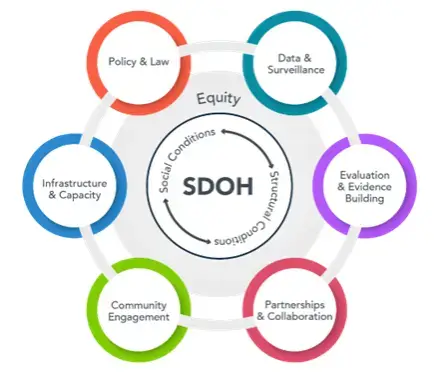Why and how to use the new SDOH codes
January 22, 2024
Social Determinants of Health (SDOH) have become increasingly important in determining the needs of patients and directing them to the help they need. For 2024, we have both a new diagnosis code as well as a new CPT code for SDOH that you’ll need to know and apply. Let’s take a closer look.
First, a quick refresher:
As defined by the CDC, social determinants of health “are the non-medical factors that influence health outcomes. They are the conditions in which people are born, grow, work, live, and age, and the wider set of forces and systems shaping the conditions of daily life.”1
1 Centers for Disease Control and Prevention, “Social Determinants of Health at CDC,” https://www.cdc.gov/about/priorities/why-is-addressing-sdoh-important.html
Examples of SDOH include:
- Safe housing, transportation, and neighborhoods
- Racism, discrimination, and violence
- Education, job opportunities, and income
- Access to nutritious foods and physical activity opportunities
- Polluted air and water
- Language and literacy skills
Now let’s look at the new CPT code: G0136
CMS established a stand-alone code, G0136 (an HCPCS code), for the assessment of SDOH. They categorize SDOH into broad groups: “economic stability, education access and quality, neighborhood and built environment, and social and community context, which include factors like how soon, food and nutrition access, and transportation needs.”
Billing for this code revolves around an AHC HRSN Screening Tool with questions designed to be used for individual respondents who can answer the questions themselves. (A parent or caregiver can answer for an individual, too, if that makes more sense.) Clinicians, including nurse practitioners and their staffs, can easily use this short tool as part of their busy clinical workflows with people of all ages, backgrounds, and settings.
This questionnaire includes 26 standardized questions that relate to the social risk factors that may affect the patient’s diagnosis and treatment. It should require only 5-15 minutes to complete, and patients can fill out the form on the day of an E/M service. Subsequently, they will need to fill out a new questionnaire after six months. You can find the questionnaire at the CMS.gov site below.
CMS will allow this code with certain psychiatric diagnostic evaluations, provided a clinical psychologist has performed a behavior assessment.
The SDoH diagnosis list is below, with the new additions flagged.2
More Resources:
HCPCS Code G0136 for Assessment Social Determinants of Health (SDoH) – CodingIntel
The AHC Health-Related Social Needs Screening Tool (cms.gov)
Got a question about E/M coding? We’d love to hear from you.
Submit your questions by emailing us at coders@calmwatersai.com
Michelle Sergei-Casiano CPC, CFPC, CEMC, CPMA Senior Manager, Regulatory and Coding Compliance coders@calmwatersai.com


